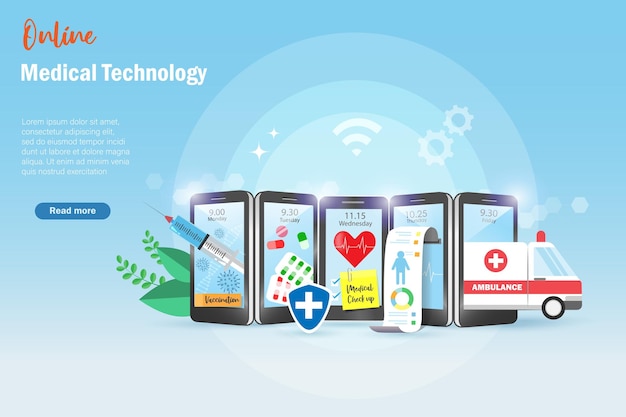Understanding the Price Savings of Subscription Based Healthcare for Families
Understanding the Price Savings of Subscription Based Healthcare for Families
Blog Article
How Subscription-Based Health Care Is Transforming the Clinical Market

The Rise of Subscription Medical Care
In current years, the medical care industry has observed a substantial shift towards subscription-based models, reflecting broader consumer trends preferring benefit and predictability. This change is driven by the enhancing need for even more personalized and accessible treatment options. Subscription health care, in some cases referred to as attendant medication or straight medical care, uses clients a set regular monthly fee for a variety of clinical services, significantly changing traditional fee-for-service designs.
The rise of subscription healthcare is promoted by developments in modern technology, which allow streamlined interaction between suppliers and individuals - subscription based healthcare. Digital platforms and telehealth solutions have come to be integral, supplying patients the capability to arrange consultations, accessibility medical documents, and obtain consultations online. This technical integration not only boosts patient interaction however also allows companies to deliver a lot more efficient treatment
Furthermore, the membership model lines up with the progressing expectations of patients who look for more control over their medical care costs and experiences. By removing the changability of co-pays and insurance cases, subscription-based health care uses a transparent and simple technique. While this version is acquiring traction, its expansion deals with obstacles such as regulatory obstacles and the requirement for broader approval within the conventional healthcare environment. Its growing presence notes a critical moment in the development of healthcare shipment.
Advantages for Service Providers and people
Subscription-based healthcare provides a multitude of advantages for both patients and providers, reshaping the dynamics of treatment. For patients, this version offers enhanced accessibility to healthcare solutions. With a foreseeable monthly charge, clients can enjoy limitless assessments, reduced delay times, and personalized treatment. This plan frequently brings about a more positive technique to health monitoring, enabling prompt treatments that can avoid persistent conditions from escalating. Furthermore, the monetary openness of subscription versions decreases the changability linked with traditional fee-for-service billing, easing the burden of unforeseen clinical expenditures.
For healthcare carriers, subscription-based models cultivate a more sustainable and gratifying method. Administrative tasks are often streamlined, reducing above prices and enabling suppliers to dedicate even more time to patient interaction. Overall, subscription-based healthcare lines up the incentives of patients and carriers, advertising an extra effective and patient-centered medical care delivery system.
Trick Attributes of the Design
Frequently, the essential features of the subscription-based health care design highlight its distinctive strategy to delivering medical solutions. Central to this model is the principle of predictable, monthly payments, offering individuals a comprehensive variety of solutions without the changability of conventional fee-for-service frameworks. This design often consists of unlimited access to primary treatment solutions, preventive care, and routine exams, guaranteeing that individuals can involve with their health care suppliers proactively instead of reactively.
Additionally, direct communication channels, such as telemedicine and messaging systems, are emphasized, enabling individuals to get timely suggestions and consultations without needing in-person consultations. This enhances ease of access and benefit, particularly for individuals with mobility constraints or those staying in remote locations. The version also fosters more powerful doctor-patient partnerships, as healthcare companies are incentivized to focus on lasting wellness end results instead of short-term check outs.
In addition, subscription-based healthcare often incorporates technical advancements, such as electronic health and wellness documents and wellness surveillance applications, to supply effective and personalized care. People profit from you could look here collaborated and continual treatment management, which is tailored to their details health and wellness needs. Inevitably, these functions collectively create a patient-centered health care experience, prioritizing ease of access, price openness, and preventative treatment.

Factors To Consider and difficulties
While the subscription-based health care model offers numerous benefits, it is not without its difficulties and factors to consider. One significant obstacle is guaranteeing equitable gain access to. Membership models might inadvertently prefer those with higher socioeconomic standing, possibly broadening disparities in medical care accessibility for lower-income people that may deal with month-to-month costs. This raises moral issues regarding inclusivity and equity in health care delivery.
Another difficulty hinges on regulatory compliance. Subscription-based medical care should navigate an intricate internet of regulations that vary by region, consisting of problems around person confidentiality, data security, and state licensing requirements. Making certain conformity without hindering the design's versatility and development can be intimidating for providers.
Additionally, there is the threat of overutilization or underutilization of services. Individuals paying a dealt with fee could additional hints overuse services, bring about enhanced operational expenses, while others may underutilize because of be afraid of straining the system, possibly disregarding essential care.
Future Potential Customers and Innovations
The landscape of subscription-based medical care is positioned for improvement with emerging developments and progressing potential customers. As innovation remains to advancement, the combination of expert system and device learning provides considerable chances to enhance analysis precision and streamline patient monitoring. Anticipating analytics can transform preventive treatment by recognizing prospective health threats before they show up, therefore minimizing both costs and the burden on health care systems.
Additionally, telemedicine is readied to increase within membership models, offering patients increased accessibility to healthcare specialists despite geographical restrictions. This not only promotes continuity of care yet additionally equips patients to involve even more actively in their health and wellness monitoring. In addition, blockchain technology provides possible in securing patient information and making certain interoperability across systems, promoting trust and openness.
Partnerships between tech firms and medical care service providers are likely to yield innovative remedies, improving client experiences and outcomes. As these prospects appear, subscription-based healthcare has the possible to redefine just how treatment is provided and accessed.
Verdict
Subscription-based health care is changing the medical check this site out sector by supplying an extra available, foreseeable, and patient-centered method to medical services. Despite difficulties such as regulatory obstacles and potential differences in access, the registration design holds guarantee for an extra efficient and tailored health care experience.
Registration healthcare, often referred to as attendant medication or direct primary care, uses people a fixed month-to-month charge for a range of medical solutions, considerably altering traditional fee-for-service versions.
Additionally, the registration model straightens with the advancing expectations of patients that seek even more control over their medical care expenses and experiences. For people, this version supplies improved accessibility to health care solutions. In general, subscription-based medical care lines up the rewards of individuals and service providers, advertising an extra patient-centered and effective healthcare shipment system.
Furthermore, telemedicine is set to expand within subscription designs, offering patients enhanced access to healthcare professionals regardless of geographical constraints. - subscription based healthcare
Report this page